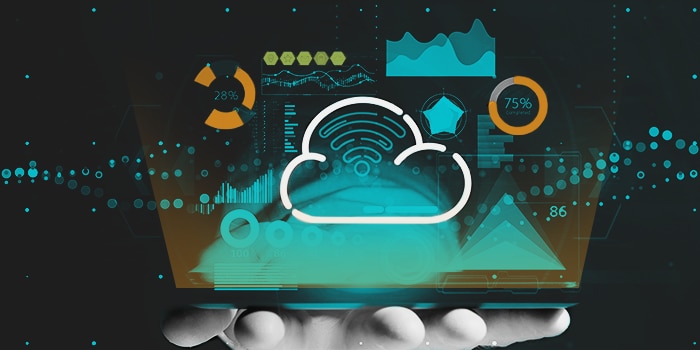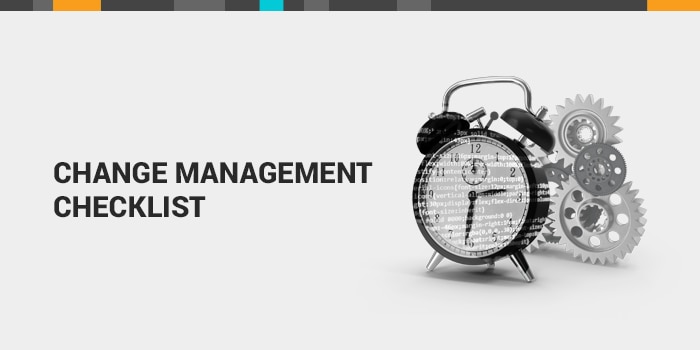Outline Your Goals and Implementation Strategy
Similar to any project or task, start with identifying your goals and a basic strategy. ITAM can be as simple or complex as your organization can handle, so it’s best to meet with key stakeholders to outline what your goals are beforehand.
Depending on your resources, you may want to start small and set a goal of simply accounting for how many desktop or laptops are currently in use, followed by software or other hardware.
Establish a Team to Manage Your IT Asset Initiatives
Once a plan is in place, it’s a good idea to decide whose responsibility it will be to manage all these different ITAM functions over time. This might include importing assets, handling and tracking software licenses, or running reports and responding to risks.
Depending on the size of your organization (and IT department), this may be one or two people, but it’s a good idea to have a planning session to map out everything.
Create a Plan for Collecting Asset Data
Will you scan your network for hardware or software? Import other assets not connected to your network? Deciding what tools or software you will need to collect the data over time is important.
Understand your options and determine what asset tracking methods will best suit your needs, whether you want to import hardware manually, deploy an agent on certain devices to automatically report back information regularly, or a combination of both.
Link Users to Their Assets
One of the biggest benefits of IT asset management is gaining visibility into who has access to certain hardware or software assets you have deployed.
This can help technicians understand what departments or employees may need to be added to the upgrade list, and can help with budgeting and forecasting.
Verify the Condition of Hardware Assets
While the process of importing assets is easier than ever with asset discovery tools, verifying the physical condition of hardware assets is a good best practice whenever you are beginning to track your assets.
Assigning a condition can be helpful for prioritizing equipment upgrades, as well as what departments or business units may need to be prioritized over others.
Personalize with Dashboards
After assets are imported, dashboards are another customization to consider leveraging for visibility. Dashboards make it simpler to have an up-to-date view of all the assets your organization has in use.
Especially when linked to a network or open tickets, these dashboards can be a good indicator of device health. They are also highly configurable, and a good way to view any new assets in the last 30 days, for example.
Unify IT Service Management and ITAM
If an employee is having a problem with their laptop, simply opening a ticket is one thing, but linking their issue with a known asset is another.
Integrating asset management with service management enables IT pros to streamline service delivery by linking opened tickets with assets in use, previous related incidents, and can help with making decisions by delivering more helpful information to the service desk agent.
To explore the benefits of both ITAM and ITSM together view our latest webinar Using Complete ITAM Data to Improve ITSM.
Manage and Respond to Risks
One benefit of populating asset data within your ITAM solution is the ability to view potential risks as they arise. Monitoring potential risks is made easier with ITAM software since risks can be detected automatically and responded to quickly.
This is critical for identifying vulnerabilities that need attention and taking action to ensure assets aren’t at risk in the future.
Measure the ROI of Asset Management
Hand in hand with reporting is understanding what kind of financial impact implementing asset management can have on your organization.
Calculate the annual costs of hardware or server repairs, maintenance, and subscription costs. By starting with a baseline of costs, you’ll be better equipped to track the ROI of IT asset management in terms of lowering maintenance and support costs over time.
Add Contract and Warranty Data
ITAM software is not only helpful for tracking hardware, but also for managing renewal deadlines, warranty expirations, and more.
Some of this data can be automatically populated once all your assets are in the database to help your team stay in compliance.
One of the most common use cases is software license management, and having an understanding of which licenses are in use or available.
Implement ITIL 4 ITAM Best Practices
As common practice, it’s helpful to have an ITIL-certified expert weigh in on these changes ahead of time. Understanding these best practices as it relates to asset management is critical for controlling costs, managing risks, and providing the most value as possible to employees using an array of assets.
The Essential IT Asset Management Checklist
August 28, 2019 |
ITSM

As one of the 34 practices outlined in ITIL 4, IT asset management (ITAM) is one of the most practical undertakings your IT department can carry out this year.
While asset management involves simply taking inventory of hardware and software assets and using this data to help make decisions, it can seem like a daunting task if this is a new or evolving task for your IT department.
Here is a checklist of items to keep in mind if you are considering implementing an IT asset management strategy.







